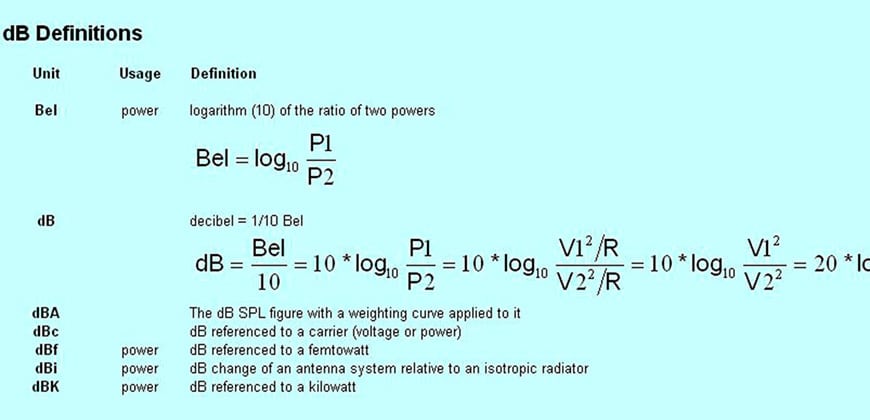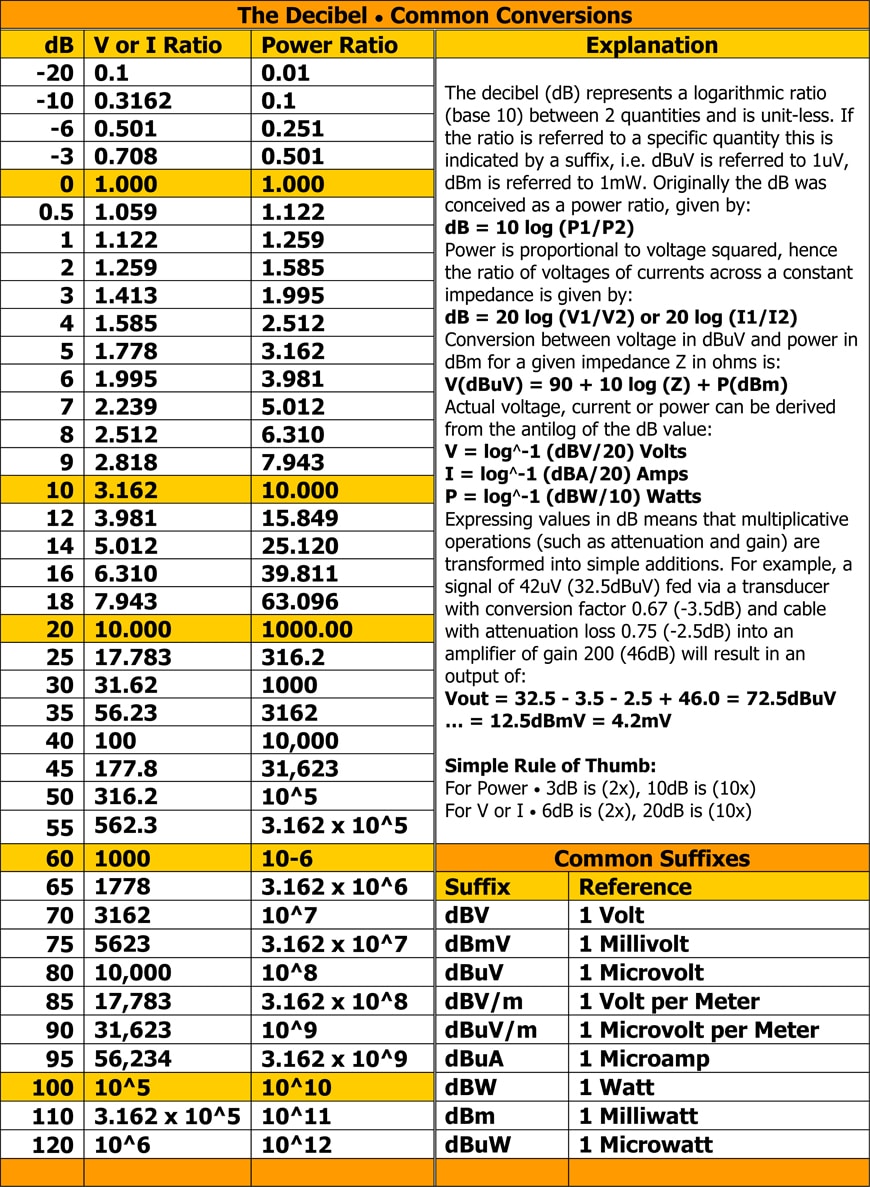The deciBel (dB) Logarithmic Unit to Express Ratio Between 2 Values
The decibel (dB) is used for a variety of measurements in science and engineering, most prominently in acoustics, electronics, and EMC / EMI. Gains of amplifiers, attenuation of signals, and signal-to-noise ratios are often expressed in “dB”.
[br]
The decibel (dB) is a logarithmic unit used to express the ratio between two values of a physical quantity, often power or intensity. One of these quantities is often a reference value, and in this case the decibel (dB) can be used to express the absolute level of the physical quantity.
The decibel is also commonly used as a measure of gain or attenuation, the ratio of input and output powers of a system, or of individual factors that contribute to such ratios. The number of decibels is ten times the logarithm to base 10 of the ratio of the two power quantities. A decibel is one tenth of a bel, a seldom-used unit named in honor of Alexander Graham Bell.
Originally the dB was conceived as a power ratio, given by; dB = 10 log (p1/P2). Power is proportional to voltage squared, hence the ratio of voltages or currents across a constant impedance is given by; dB = 20 log (V1/V2) or 20 log I1/I2). Conversion between voltage in dBuV and power in dBm for a given impedance Z ohms is; V(dBuV) = 90 + 10 log (Z) + P(dBm).
If the ratio is referred to a specific quantity this is indicated by a suffix, i.e. dBuV referred to 1uV, dBm is referred to 1mW. Other helpful formulas and conversions can be found at the AH Systems website, AR EMC Formulas & Equations document and Sengpiel Audio website.
Article: TesEq / HCT USA
Editor: M. Danmole’
Image: TesEq






